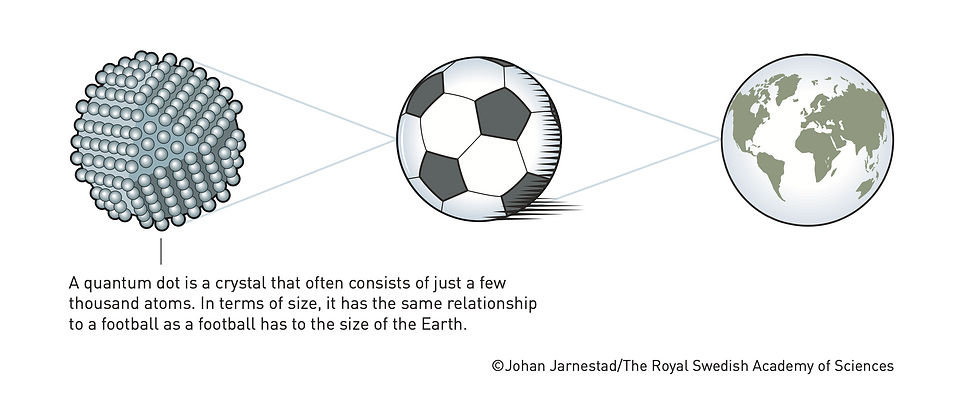
Congratulations to Dr. Moungi G. Bawendi, Dr. Louis E. Brus, and Dr. Alexei I. Ekimov for their Nobel Prize in Chemistry for pioneering quantum dot synthesis. This recognition is a source of inspiration for nanoscale researchers.
Quantum dots, tiny particles, possess distinct properties that vary significantly with size, prompting the question: why do these property deviations occur?

Materials comprise millions of atoms and observed properties result from collective atomic behavior. In bulk materials, not all atoms interact with the surface or external environment; many stay within, engaging primarily with each other. When we reduce material size to the nanoscale, more atoms are near the surface, resulting in an exceptionally high surface-to-volume ratio and unique properties.

For instance, gold appears yellow in bulk but shifts to dark purple or red at the nanoscale, interacting with longer-wavelength light and creating color variations. Smaller particles emit shorter wavelengths (purple), while larger ones emit longer wavelengths (red), driven by light energy differences. Many other properties, like conductivity, magnetism, etc., can also change depending on the size and nature of the materials, creating tremendous opportunities in many applications. This research unveils opportunities to study size-induced property changes impacting energy storage, cancer treatments, and more. Observing real-world interactions at smaller scales provides insights into solving global challenges.
Warmest congratulations from the Burda group to the Nobel laureates. Your achievements inspire us to continue nanoscale work, addressing critical global issues through innovative research.

